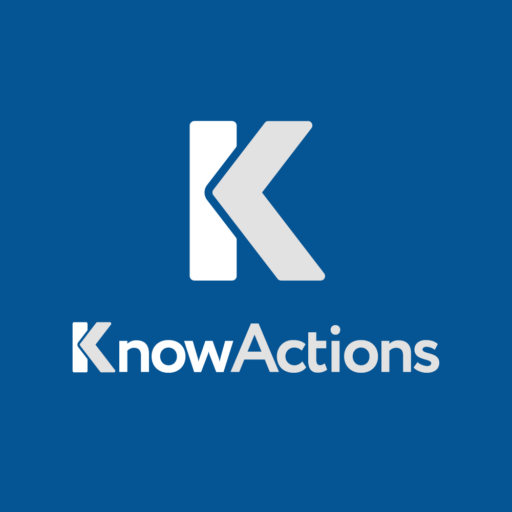Did you know that teams practicing accountability have a 50% higher chance of meeting or exceeding performance expectations1? This statistic highlights the vital role of accountability in team success. In today’s fast-paced business landscape, where shared responsibility and team dynamics are crucial, understanding and implementing accountability strategies is key to efficiency.
Accountability in teams transcends just completing tasks. It’s about creating a culture where each member owns their actions and contributes to the team’s success. When teams embrace accountability, they not only increase productivity but also foster innovation and strengthen client relationships12.
Interestingly, organizations that effectively recognize accountability efforts see 31% lower voluntary turnover rates1. This shows the significant impact of accountability on employee engagement and retention. By using strategies like regular check-ins, clear goal-setting, and open communication, teams can greatly improve their performance and unity.
Leaders are crucial in promoting accountability. By setting an example, they can increase team members’ accountability by up to 50%2. This effect creates a positive workplace culture where trust grows and shared responsibility becomes standard3.
As we delve deeper into strategies for fostering accountability in teams, we’ll look at practical ways to improve team dynamics and drive success. From setting clear expectations to celebrating victories, each step is vital in building a high-performing, accountable team.
Key Takeaways
- Accountability significantly boosts team performance and success rates
- Effective recognition programs reduce voluntary turnover
- Regular check-ins and open communication foster accountability
- Clear goal-setting improves task completion rates
- Leadership behavior directly impacts team accountability
- Trust and shared responsibility are foundational to team success
Understanding Team Accountability
Team accountability is essential for successful collaboration and tracking performance. It extends beyond individual accountability, fostering a collective commitment within the group. This creates a dynamic web of ownership, support, and trust, turning teams into high-performing units.
Defining accountability in a team context
In a team, accountability means each member is responsible for their actions and outcomes. It involves owning tasks, meeting deadlines, and aiding in achieving collective goals. Interestingly, 85% of employees are unsure about their organization’s goals, showing the importance of clear accountability structures4.
The importance of shared responsibility
Shared responsibility is key to team success. When all members feel accountable, it builds a culture of trust and mutual support. Yet, 84% of the workforce sees their organization as “trying but failing” or “avoiding” accountability5. This highlights the need for better communication and collaboration strategies.
How accountability impacts team performance
Accountability greatly enhances team performance. It cuts down on errors and rework, offers clarity, and boosts motivation. Teams that embrace accountability enjoy smoother operations, leading to quicker project completion and goal attainment6. Furthermore, 91% of employees see effective accountability as crucial for leadership development, underlining its vital role in team success4.
Effective accountability strategies can significantly boost productivity, team alignment, and task tracking. By promoting a solutions-focused approach, teams empower members to take responsibility for identifying and solving problems. This fosters an innovative and accountable culture5.
The 5Cs Framework for Building Accountability
The 5Cs Framework is a powerful tool for enhancing team accountability. It boosts Leadership effectiveness and fosters Trust among team members. This structured approach includes five key components: Common Purpose, Clear Expectations, Communication and Alignment, Coaching and Collaboration, and Consequences and Results7.
Common Purpose aligns team members with a shared goal. Clear Expectations outline roles and deadlines. Communication and Alignment keep everyone informed and aligned. Coaching and Collaboration provide support and guidance. Consequences and Results recognize achievements and address setbacks constructively7.
Leaders find this framework crucial for understanding their role in team performance. It equips them with tools for better team support and prevents recurring issues7. Executives increasingly focus on enhancing leadership accountability. They seek ways to build team accountability while maintaining a positive leadership image8.
| Component | Description | Impact |
|---|---|---|
| Common Purpose | Shared team goal | Increased motivation |
| Clear Expectations | Defined roles and deadlines | Improved efficiency |
| Communication and Alignment | Consistent information sharing | Enhanced coordination |
| Coaching and Collaboration | Support and guidance | Skill development |
| Consequences and Results | Performance evaluation | Continuous improvement |
Implementing the 5Cs Framework effectively leads to significant improvements. A successful project utilizing this approach streamlined internal systems, saving thousands of dollars and enhancing client experiences7. Leaders are advised to set clear expectations and communicate them repeatedly. This ensures team members understand their roles8.
Incorporating Feedback Mechanisms within this framework is essential. It facilitates continuous improvement and addresses performance issues promptly. Leaders often face challenges in providing constructive feedback without being perceived negatively. This highlights the importance of developing strong communication skills8.
Benefits of Fostering Accountability in Teams
Creating a culture of accountability within teams brings numerous advantages to organizations. It shapes the dynamics of the team and propels overall success. Let’s delve into the primary benefits of promoting accountability in teams.
Enhanced Productivity and Efficiency
When team members own their tasks, productivity significantly increases. Teams that are accountable finish projects quicker and run more efficiently. This efficiency comes from individuals exceeding their basic duties9.
Improved Quality and Innovation
Accountability stimulates innovation and raises work quality. Team members are encouraged to take risks and explore new ideas. This trust-based environment leads to innovative problem-solving and groundbreaking discoveries9.
Stronger Team Culture and Trust
Accountability builds a robust team culture grounded in trust and collaboration. It promotes open communication and honest feedback, creating a secure space for sharing ideas. This openness deepens relationships within the team910.
Increased Client Satisfaction
The effects of accountability reach clients. Teams delivering consistently high-quality work boost client satisfaction. Happy clients often become loyal advocates, recommending the business and driving growth9.
| Benefit | Impact on Team | Impact on Organization |
|---|---|---|
| Enhanced Productivity | Faster project completion | Increased output and efficiency |
| Improved Quality | Higher standards of work | Better products/services |
| Stronger Culture | Improved Collaboration | Enhanced employee retention |
| Client Satisfaction | Positive client interactions | Business growth and reputation |
Implementing effective Performance Tracking systems can further enhance these benefits. It ensures teams stay on track with organizational goals while maintaining accountability10.
Creating a Clear Vision and Setting Expectations
A clear vision and well-defined expectations are essential for team success. Leaders must craft a compelling narrative that aligns with organizational goals. This process involves developing a mission statement, setting SMART goals, and clarifying roles.
Goal setting is a key leadership skill. Nearly half of U.S. employees don’t know what’s expected of them at work, leading to low engagement rates of only 32% in the U.S. and 21% worldwide11. To address this, leaders should use SMART goals tailored to each employee’s role.
Effective communication is vital in conveying expectations. Regular meetings and one-on-one interactions help ensure team members understand their roles. Leaders can use various tools to monitor performance and identify gaps in meeting expectations11.
To create a clear vision, teams can employ techniques like SWOT analysis, feedback surveys, and benchmarking. The Entrepreneurial Operating System is an effective method for analyzing team dynamics. Tools such as KPIs, 360-Degree Feedback, and OKRs help gauge the current situation12.
Envisioning the future involves brainstorming, vision boarding, and storytelling. It’s important to set realistic goals while considering market limitations. Working backward from the vision helps create a concrete plan that aligns daily actions with long-term objectives12.
| Employee Level | Performance Focus |
|---|---|
| Senior Managers | Departmental Performance |
| Managers | Team Unity and Results |
| Professionals | Project-Related Performance |
| Individual Contributors | Assigned Tasks |
| Project Initiators | Major Projects/Initiatives |
By focusing on clear communication, goal setting, and leadership, teams can create a shared vision that drives accountability and success.
Encouraging Open Communication and Feedback
Open communication and feedback are essential for team accountability. Effective feedback mechanisms improve team dynamics and foster collaboration. This approach is crucial for organizational success.
Establishing Regular Check-ins
Regular check-ins are key to keeping teams aligned and accountable. These meetings offer timely feedback, allowing for adjustments and growth. They replace the traditional annual review model13. One-on-one meetings between leaders and team members are vital for maintaining accountability14.
Creating a Safe Space for Feedback
A safe environment encourages team members to share feedback on each other and themselves. A peer review system, where team members give and receive feedback, boosts accountability14. A growth mindset views challenges as opportunities for development and feedback as a tool for betterment13.
Practicing Active Listening
Active listening shows the value of input and a commitment to addressing issues. Providing training, mentorship, and tools helps team members improve continuously13. Constructive feedback on individual performance identifies areas for growth and keeps motivation high15.
| Feedback Strategy | Benefits | Implementation |
|---|---|---|
| 360-Degree Feedback | Holistic view of performance | Encourage feedback from peers, subordinates, and supervisors |
| Recognition of Achievements | Motivates team members | Acknowledge both small and large accomplishments |
| Transparency Culture | Fosters feedback-oriented environment | Openly acknowledge successes and areas for improvement |
By promoting open communication and these feedback strategies, teams can build a culture of accountability. This culture enhances performance and innovation.
Accountability in Teams: Strategies for Success
Effective Leadership is crucial for team accountability. Leaders who support their teams instead of just focusing on accountability create a better environment16. This method helps prevent team members from feeling down or seeing accountability as a failure16.
Clear communication and well-set expectations are vital for successful teams. Performance Tracking is key to keeping accountability in check. Regular progress reviews help teams know their roles and make better decisions17.
![]()
Setting clear goals is another important tactic. Leaders should let team members take charge and assign tasks. This builds trust and improves team performance17. Taking strategic breaks can also increase productivity and keep focus.
“Effective leadership entails supporting and challenging direct reports to help them reach their potential.”
Remote work brings its own set of accountability challenges. But, clear rules and tech for talking can help get over these issues17. The 5 Cs of teamwork – Communication, Contribution, Commitment, Compromise, and Cooperation – are key for a team that values accountability17.
| Strategy | Impact |
|---|---|
| Clear Communication | Improved Task Clarity |
| Regular Progress Checks | Faster Decision-Making |
| Empowering Team Members | Enhanced Trust and Performance |
| Implementing 5 Cs of Teamwork | Stronger Accountability Culture |
By using these strategies, teams can build a culture of accountability. This leads to better performance, trust, and success overall.
Empowering Team Members Through Delegation and Autonomy
Effective delegation and fostering autonomy are crucial for empowering team members. Leaders who excel in these areas significantly impact Team Dynamics and productivity. Let’s delve into strategies that boost Shared Responsibility and Leadership within teams.
Effective Delegation Techniques
Delegation is a potent tool for employee growth and development. When leaders delegate tasks well, they empower team members to own their work and make decisions independently18. This method not only increases productivity but also enhances skill development. Indeed, 82% of team members delegated tasks report improved skill development and career growth opportunities19.
To delegate effectively, leaders should:
- Set clear expectations and goals
- Provide necessary resources and support
- Trust team members’ capabilities
- Offer visibility and career advancement opportunities
Fostering Independent Decision-Making
Empowering team members to make independent decisions is vital for accountability. Trust from leaders leads to increased commitment and respect. Empowered employees tend to think creatively and take the initiative18. This trust-based approach results in a 50% increase in proactivity and commitment among team members19.
Providing Growth Opportunities
Offering growth opportunities is key for cultivating a productive team environment. Leaders can do this by:
- Assigning challenging tasks
- Providing mentorship and coaching
- Encouraging skill development
- Celebrating achievements and milestones
Tasks aligned with team strengths lead to a 45% increase in efficiency. Regular check-ins and feedback sessions improve task outcomes and morale by 65%19. By adopting these strategies, leaders foster a culture of Shared Responsibility and continuous improvement in their teams.
Leadership’s Role in Cultivating Accountability
Leaders are vital in promoting accountability within their teams. Teams with strong leadership accountability tend to thrive, as noted in the McKinsey’s State of Organizations 2023 report20. These leaders master the delicate balance between demanding accountability and showing empathy at work20.
To foster accountability, leaders must:
- Set clear goals aligned with the organization’s strategy and values20
- Implement checks to ensure leaders are accountable20
- Use Objectives and Key Results (OKRs) to boost accountability20
Studies indicate that leaders with accountability and integrity surpass their counterparts21. Employees prefer leaders who empower and encourage an open culture over those who rule with an iron fist21. This method builds Trust and improves Communication across the organization.
Effective leadership means creating a space where employees feel valued and responsible. This is achieved by entrusting them with tasks and opportunities21. Such a strategy enhances teamwork, productivity, and engagement21.
“Leadership is not about being in charge. It is about taking care of those in your charge.” – Simon Sinek
To cultivate a culture of accountability, leaders must set clear expectations and give their teams a sense of purpose21. It’s essential to honor commitments, as neglecting them can lead to missed deadlines and disengaged teams21. By adopting these principles, leaders can propel their organizations towards success and foster a positive workplace.
| Leadership Action | Impact on Accountability |
|---|---|
| Setting clear goals | Enhances focus and direction |
| Empowering team members | Increases responsibility and ownership |
| Promoting open Communication | Builds Trust and transparency |
| Following through on commitments | Reinforces reliability and credibility |
Implementing Performance Tracking and Goal Setting
Performance tracking and goal setting are essential for team efficiency. They provide direction and help measure progress towards objectives. A well-structured approach to these processes can significantly boost team dynamics and overall productivity.
Utilizing SMART Goals
SMART goals offer a clear framework for setting objectives. This method ensures goals are Specific, Measurable, Achievable, Relevant, and Time-bound. By implementing SMART goals, teams can focus their efforts and track progress effectively. Only 40% of employees across organizations know their company’s goals, highlighting the importance of clear goal-setting22.
Implementing Key Performance Indicators (KPIs)
KPIs are vital metrics for evaluating success and identifying areas for improvement. They provide tangible benchmarks for performance tracking. Effective KPIs align with organizational strategy and suit specific job roles. Managers should aim to have no more than two or three key goals at any one time to maintain focus22.
![]()
Regular Progress Reviews
Continuous feedback and performance reviews are essential for maintaining accountability. They allow for timely adjustments and ensure alignment with team objectives. Regular team meetings and one-on-one sessions are crucial for monitoring progress and providing support22. This ongoing cycle of review and adjustment helps teams stay on track and adapt to changing circumstances.
| Goal Setting Element | Impact on Team Performance |
|---|---|
| Clear Goals | Employees are 2.8x more likely to be highly engaged22 |
| Goal Clarity and Commitment | Accounts for 31% of difference between high and low performing teams22 |
| Unclear Goals | 42% of workers rate it as top source of stress22 |
By implementing these strategies, teams can enhance their performance tracking and goal-setting processes. This structured approach fosters accountability, improves team dynamics, and drives overall efficiency in achieving organizational objectives.
Conclusion
Accountability within teams is essential for boosting team efficiency and enhancing leadership. It ranks third among seven key factors for productivity23. This focus on shared responsibility boosts innovation, trust, and propels teams towards their objectives.
Setting clear expectations is the bedrock of team accountability. Leaders who establish transparent goals and accountability systems see better team performance24. Regular check-ins, evaluations, and KPIs help measure accountability, keeping teams on track.
Accountability does more than just help complete tasks. It improves communication, trust, and morale. Teams that value accountability see growth, innovation, and better goal alignment25. By promoting mutual accountability, organizations can reach their full potential and overcome challenges with resilience.
In summary, accountability is not just a theory but a key driver of success. As work environments change, maintaining strong accountability is vital. By embracing accountability, teams can achieve high efficiency, develop strong leadership, and foster a culture ready for long-term success.




